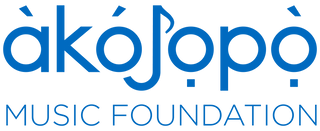Author - Jide Durowoju
The Yorùbá talking drum, Gángan, is more than just an instrument; it is a cultural icon, a storyteller, and a communicator. Known for its ability to mimic the tonal language of Yorùbá, the Gangan bridges the gap between rhythm and speech, making it a fascinating instrument to learn. In this blog post, we will dive into how to play Gángan, explore its history, the types of Gangan, the sounds it can make, and answer frequently asked questions about this remarkable drum.
Credit - Nations Rhythm Festival, founded by Peter Ọlálékan Adedokun
The History of the Gángan
Many regions of West Africa have strong talking drum traditions, including Cameroon, Ghana, Senegal, and Nigeria. However, the talking drum is most prominent among the Yorùbá ethnic group primarily situated in Nigeria, as well as in Togo and Benin Republic. Traditionally, the drum was used by the Yorùbá to communicate messages across distances, convey royal proclamations, and accompany songs and dances in ceremonies and festivals. The talking drum is also played by other ethnic groups in Nigeria such as the Hausa.
Often referred to as a "talking drum," the Gángan is able to mimic tonal speech patterns, making it an essential tool for communication in Yorùbá culture. Its hourglass shape is fitted with adjustable leather cords, allowing players to vary the drum’s pitch by tightening or loosening them. This ability to "speak" through rhythm and tone is deeply embedded in the oral traditions of the Yorùbá people, where the Gángan serves as a medium for storytelling, delivering messages, and preserving history. The drum’s sound is often described as "Gángan gò, gángan gbé," imitating tonal inflections in Yorùbá speech.
The Gángan, also called the Dùndún—meaning "sweet sound"—is the principal drum in the family of Yorùbá drums. Beyond its melodic versatility, it plays a central role in Yorùbá folklore, serving as a material repository for òwe (proverbs), èéfò (poetry), and ìtàn (historical narratives). Typically performed alongside a supporting ensemble of Yorùbá drums, the Gángan lays the rhythmic foundation that allows the lead drum to "speak," engaging in a dynamic interplay that mirrors conversation. This interaction is not only a musical experience but also a cultural dialogue that reflects the essence of Yorùbá life and traditions.
Insert Link Book Ganan Drumming lesson
Why Learn the Gángan?
Learning to play the Gángan is not just about mastering an instrument; it’s about preserving a rich cultural tradition. As modern music continues to evolve, the Gángan remains a symbol of the timeless artistry and ingenuity of the Yorùbá people.
Types of Gángan Drums
There are several types of Yorùbá talking drum, Gángan, each with its unique size, tone, and purpose. The dùndún ensemble is comprised of Ìyá Ìlù, Òmèlè Àbò, Òmèlè Mẹ́tà, and Òmèlè Àkó drums:
Credit - Nations Rhythm Festival, founded by Peter Ọlálékan Adedokun
-
Ìyá Ìlù (Mother Drum)
-
The largest Gangan in the ensemble
-
Often played in ceremonial settings.
-
Produces deep, commanding sounds.
-
Òmèlè Àbò (Female Drum)
-
A medium-sized drum with a softer tone.
-
Used to complement the Iya Ilu in performances.
-
Òmèlè Mẹ́tà (Set of Three Drums)
-
A set of smaller, higher-pitched drums played together.
-
Adds rhythm and texture to the drumming ensemble.
-
Òmèlè Àkó (Male Drum)
-
A slightly smaller drum with a sharper sound.
-
Often used for improvisation.
How to Play Gángan
Holding the Drum
To play the Gángan, you’ll need to hold it comfortably under one arm, with the leather cords resting against your underarm. The drum is struck with a curved stick called an Opá, while squeezing the cords changes the drum’s pitch. To avoid puncturing the drum, the head of the stick is covered with a flat rubber or leather material. A strap made from leather and padded cloth is used to carry the drum. Depending on the handedness of the drummer, the drum is suspended over the left or right shoulder with the strap and hangs under the opposite armpit.
Credit - Nations Rhythm Festival, founded by Peter Ọlálékan Adedokun
Basic Techniques of how to make Yoruba drum - Gángan - to speak
To play the Gángan and make it “speak” will be challenging at first for a new learner, but easy for a master drummer who has memorized the rhythms which map onto the Yorùbá language. The Gángan mirrors the tonal patterns of the Yorùbá language, which relies on pitch variations to convey meaning. The dùndún drum's unique design includes two drumheads connected by goat leather cords. By squeezing or loosening these cords as the drummer beats with the drumstick, the pitch of the drum can be adjusted, producing high (H), medium (M), or low (L) tones. These tones align conceptually with the first three solfege notes. Here's how it works:
-
Do - Low tone (L): Produced with no or minimal compression.
-
Re - Medium tone (M): Created with light compression of the cords.
-
Mi - High tone (H): Achieved by tightly compressing the cords.
Through this technique, the drum "speaks" and conveys messages such as proverbs, prayers, announcements, and even jokes. The dùndún is deeply rooted in Yorùbá culture and spirituality. It plays a vital role in honoring the Orishas, the deities of Yorùbá religion, during rituals and ceremonies. Its ability to mimic human language enhances its significance in these sacred and communal contexts.
Tips for Beginners
-
Start with basic rhythms before attempting tonal mimicry.
-
Practice controlling the tension on the cords to achieve consistent pitch changes.
-
Listen to recordings of master drummers to understand the nuances of playing the Gángan
Read More (The Language of Gangan, A Yoruba Talking Drum)
FAQs About the Gángan Drum
Credit - Nations Rhythm Festival, founded by Peter Ọlálékan Adedokun
1. Is the Gángan difficult to learn?
Learning to play the Gángan requires patience and practice, especially when mastering the pitch variations. However, with consistent effort, even beginners can create basic rhythms and sounds.
2. What materials are used to make the Gángan?
The Gángan is traditionally made of wood, goat skin, and leather cords. Modern versions may use synthetic materials for durability.
3. Can the Gángan only mimic Yorùbá?
While the Gángan is designed to imitate Yorùbá tones, skilled drummers can adapt it to mimic other tonal languages or even Western melodies.
4. Where can I learn to play Gángan?
You can learn through workshops, online tutorials, or by enrolling in drumming classes led by experts such as those offered at akojopo.org
5. What are the key benefits of learning Gángan?
-
Connects you to Yorùbá culture and history.
-
Improves rhythm and hand-eye coordination.
-
Fosters creativity and musical expression.
Conclusion
Whether you’re an aspiring musician or a cultural enthusiast, the Gángan offers a unique opportunity to explore the connection between music, language, and Yorùbá cultural heritage. Ready to learn how to play Gángan or any Yorùbá drumming today? Book a Gángan drumming lesson today with Peter on akojopo.org and discover the magic of West African rhythms for yourself.
Share your thoughts! If you’ve ever played the Gángan or attended a drumming session, tell us about your experience in the comments below. References:
https://www.newhamheritagemonth.org/wp-content/uploads/SWV_Resource_Pack_talkingdrum.pdf
https://www.researchgate.net/publication/354475401_The_Language_of_Gangan_A_Yoruba_Talking_Drum

